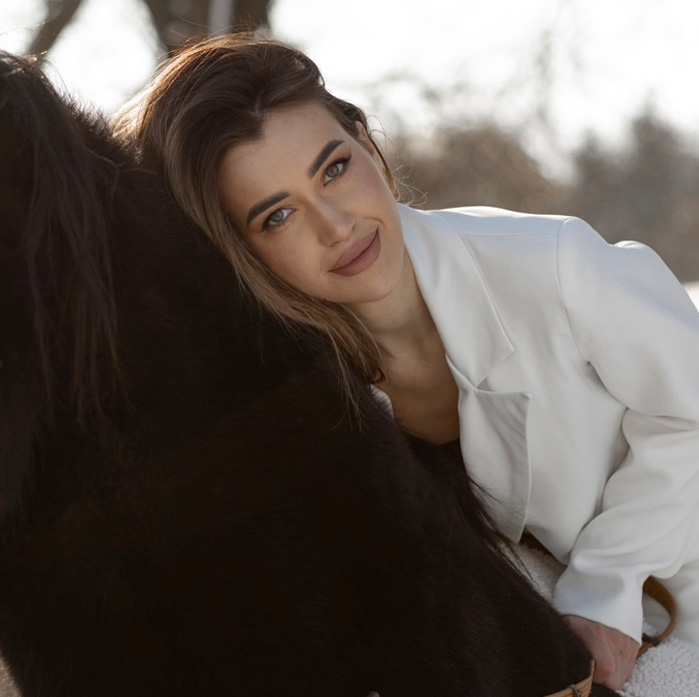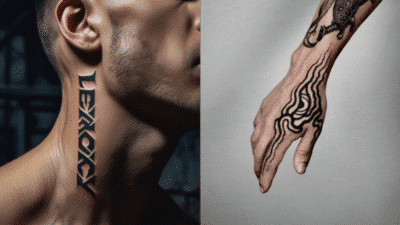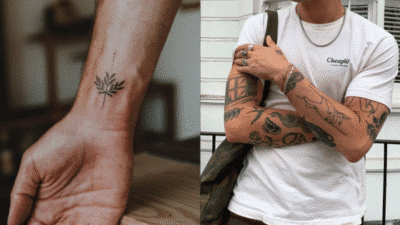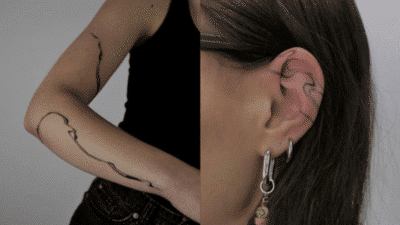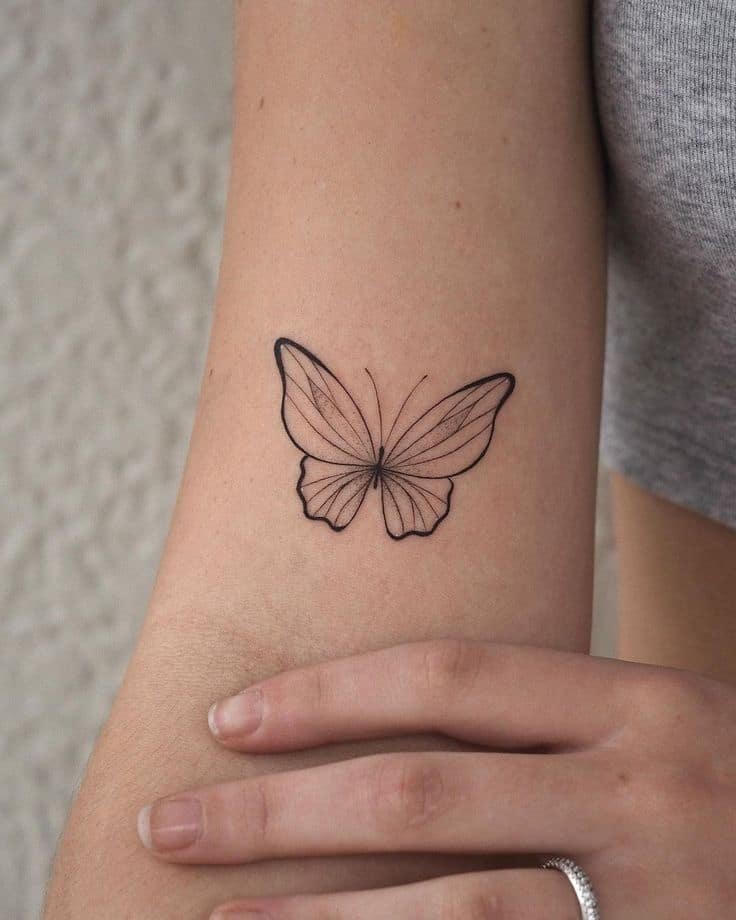
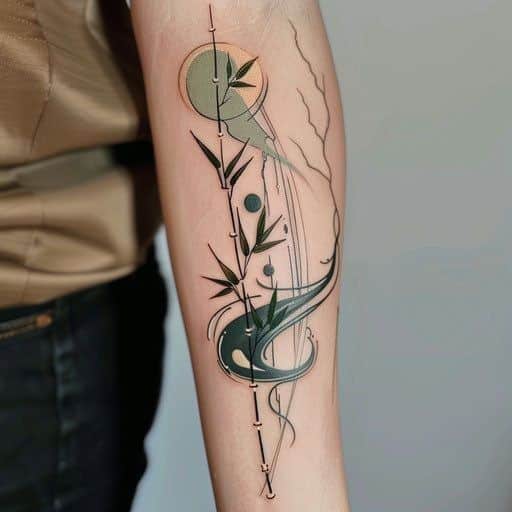
Tattoos are a popular way to express individuality, but finding a design that stands out can be challenging. Many people want something that reflects their personality or tells a unique story. A truly unique tattoo combines personal meaning with creative design and placement.
Exploring different styles, unusual spots on the body, or ideas inspired by personal experiences can lead to one-of-a-kind tattoos. Working with a talented artist who understands your vision increases the chance of creating something special.
Understanding what makes a tattoo unique helps in choosing a design that feels authentic and meaningful. This guide shares ideas and tips to inspire those looking for a tattoo unlike any other.
Key Takeways
- Unique tattoos reflect personal stories and creativity.
- Placement and style can make a tattoo stand out.
- Collaboration with artists helps turn ideas into reality.
What Makes a Tattoo Truly Unique?
The uniqueness of a tattoo often comes from the meaning behind it, how it is designed, and the style or technique used. These factors shape a tattoo into something personal and different from common designs.
Personal Symbolism


A tattoo becomes truly unique when it holds a special meaning for the person wearing it. This might be a symbol representing a life event, a loved one, or an important belief. The deeper the connection, the more personal and one-of-a-kind the tattoo feels.
People often combine several symbols or elements to tell their own story. This creates a design that no one else has because it reflects individual experiences. Even simple images gain uniqueness if they carry strong personal significance.
Choosing colors or small details that relate to personal memories can also make a tattoo stand out. It’s not about the size or complexity but the significance behind the design.
Custom Artwork vs Flash


Custom artwork means the tattoo is created just for the person based on their ideas or story. This is different from flash tattoos, which are pre-made designs anyone can get. Custom tattoos are always unique because they fit a specific person’s taste and meaning.
Flash tattoos might be popular, but they lack originality since many people can have the same design. Custom pieces involve the artist working closely with the client. This allows for changes and personal touches that make the tattoo one of a kind.
A mix of both can also work; someone might take a flash design and ask the artist to add specific elements or change the style. This approach still adds uniqueness while keeping a familiar base.
Rare Tattoo Techniques


Using uncommon tattoo techniques can make a tattoo unique beyond just the design. Techniques like white ink, UV ink, or hand-poking differ from standard machines and create distinct looks.
White ink tattoos are subtle and often hidden unless looked at closely. UV ink tattoos glow under blacklight but look normal in daylight. Hand-poked tattoos involve manually creating the design dot by dot, often resulting in a different texture and detail.
These techniques require a skilled artist and may limit the colors and styles possible, but they add exclusivity. Choosing a rare method can highlight the tattoo’s uniqueness in how it appears on the skin.
Creative Concept Ideas for Unique Tattoos
Creative tattoos often blend shape, space, nature, or culture to stand out. Using bold forms, simple lines, or meaningful symbols can make a tattoo one-of-a-kind. Each style offers ways to express personality through design and detail.
Abstract and Geometric Designs


Abstract and geometric tattoos use shapes and patterns to form interesting visuals. Circles, triangles, or lines can create art that is open to interpretation. These tattoos often focus on balance and symmetry.
People choose abstract designs to avoid direct images and keep meanings personal. Geometric tattoos can look modern and clean, perfect for those who want sharp, clear lines. They work well in black ink or subtle colors.
Adding layering or dot work inside shapes can increase complexity while keeping the design neat. Abstract styles also allow for creative placement on the body, like wrapping around limbs or shoulders.
Minimalist and Negative Space Concepts


Minimalist tattoos focus on simplicity and small size. They use fine lines and limited detail to convey meaning with calm precision. The design often contains only what is necessary.
Negative space tattoos use the skin’s natural color as part of the design. This creates contrast by leaving areas blank or unshaded, forming shapes with the absence of ink.
These styles suit people seeking subtle tattoos that aren’t too bold. Common designs include small symbols, words, or simple icons like arrows or hearts. Both approaches have a modern and clean feel.
Nature-Inspired Motifs


Nature-inspired tattoos use plants, animals, and natural scenes to connect the wearer with the world. Trees, mountains, flowers, birds, and waves are popular choices.
These tattoos can symbolize growth, freedom, or strength. They often include detailed line work or soft shading to bring the subject to life.
Combining elements like a flower with a geometric shape or adding subtle colors creates fresh, unique looks. They can cover small spots or larger areas depending on the detail.
Pop Culture References


Pop culture tattoos feature images from movies, TV shows, books, or music. Characters, logos, and symbols represent something the wearer feels connected to.
These tattoos are unique when combined with personal twists, such as mixing styles or adding unexpected elements. For example, a favorite cartoon character in a vintage style or part of a custom scene.
Fans use these tattoos to show identity or passion. They should consider how the design will age since trends change and meanings might shift over time.
| Pop Culture Tattoo Tips |
|---|
| Choose meaningful icons |
| Add personal design touches |
| Think about long-term attachment |
Personalized Tattoo Ideas
Personalized tattoos reflect someone’s unique story. They show connections to family, important people, or meaningful moments. These tattoos often carry deep emotions and lasting significance.
Family and Heritage Themes


Tattoos based on family and heritage help people celebrate their roots. Common ideas include family crests, ancestral symbols, or cultural patterns. Some choose traditional designs from their country or ethnic group.
Using names or birthdates of family members adds a personal touch. Others pick symbols like a tree representing family growth or a quote that holds special meaning. These tattoos honor past generations and create a visible link to their background.
Portraits and Character Illustrations


Portrait tattoos show faces of loved ones, famous figures, or fictional characters. They require detailed work to capture likeness and expression. Realistic portraits need a skilled artist who can work with shading and fine lines.
Character illustrations allow more creativity. People pick superheroes, cartoon figures, or mythological beings that reflect their personality or passions. These tattoos combine personal meaning with artistic style, making them unique to the wearer.
Commemorative Dates and Locations


Commemorative tattoos mark significant times or places. This can include birthdays, anniversaries, or the date of a big life event. Coordinates of a special location are also popular, like where someone was born or met an important person.
Numbers and symbols related to these dates or places are often integrated creatively. For example, a tattoo may use Roman numerals or map outlines. These designs keep memories alive and hold specific value only understood by the person who has them.
Unusual Placement for Unique Tattoos
Choosing where to place a tattoo can make it stand out as much as the design itself. Some people pick spots that are rarely seen, while others go for designs that wrap around or don’t match perfectly on both sides of the body.
Hidden or Rare Body Spots


Tattoos in hidden or unusual spots give a personal touch that only the wearer can fully show off. Common hidden places include behind the ear, the inside of the lip, or under the arm. These spots are less visible in daily life but can hold strong meaning.
Other rare spots are the ribcage, the back of the neck, or the side of the foot. These areas tend to be more private and may need more time to heal because of skin sensitivity and movement. Choosing such spots can make the tattoo feel like a secret or a special symbol for the wearer alone.
Asymmetrical Placement


Some choose to place tattoos asymmetrically to draw the eye or create a dynamic look. This means getting one tattoo on one side of the body without matching it on the other side. It breaks the usual symmetry many tattoos follow.
Examples include a single tattoo on one shoulder, wrist, or calf. This placement emphasizes uniqueness because it stands out from the typical paired designs. Asymmetrical tattoo placement can make a simple design more interesting just by location.
Full-Body or Wraparound Designs


Full-body or wraparound tattoos cover large areas and create continuous artwork on the body. Wraparound designs often circle the arm, leg, or torso, connecting a series of smaller images or patterns into one flowing piece.
These tattoos require careful planning to follow the body’s curves and muscles. They offer a bold and detailed way to wear personal stories or themes. Because they cover large spaces, they take more time and money but result in a striking and unique look.
Innovative Tattoo Styles
Some tattoo styles focus on color and shading, while others use special inks or unique designs to create new effects. These styles offer options for people who want something different from classic tattoos.
Watercolor Techniques


Watercolor tattoos look like paint on paper. They use soft colors without bold lines. This gives a blurred, flowing effect. Artists blend colors carefully to mimic real watercolor paint.
This style works well with flowers, animals, and abstract shapes. It needs a skilled artist because the colors can fade faster. People often choose these tattoos for their gentle and artistic look.
UV Ink and Glow-in-the-Dark Tattoos


UV ink tattoos are invisible in normal light but glow under blacklights. These tattoos use special ink that reacts to UV rays. They are popular for people who want a tattoo that is subtle most of the time.
Glow-in-the-dark tattoos use phosphorescent ink. They shine after being exposed to light, but the glow is weaker than UV tattoos. Both types require cautious care to keep the ink from fading quickly.
Embroidery Effect Tattoos


Embroidery effect tattoos imitate stitched fabric designs. They use shading and lines to make the tattoo look like thread sewn into skin. This style can depict flowers, animals, or patterns with a three-dimensional feel.
These tattoos need precise needlework and shading. The result is a unique texture illusion that stands apart from flat tattoos. It suits people looking for a detailed and tactile design style.
Collaborative and Interactive Tattoos
These tattoos create connections between people or technology. They often involve teamwork or special effects that change how the tattoo looks or is experienced.
Matching and Puzzle Piece Tattoos


Matching tattoos are designed to show a bond between two or more people. They often use symbols, quotes, or images that are meaningful to everyone involved.
Puzzle piece tattoos are a popular form of matching tattoos. Each person gets a piece of the design. When put together, the tattoo forms a complete image. This idea works well for friends, family, or couples.
These tattoos highlight unity and shared experiences. They remind wearers of their relationship visually and physically.
Augmented Reality Tattoos


Augmented reality (AR) tattoos use technology to add digital effects to the design. When viewed through a smartphone or special app, the tattoo appears to move or change.
This type of tattoo combines art and technology. It creates a new way to interact with body art.
The tattoos require a digital layer linked to the inked design. People can see animations, messages, or 3D models tied to the tattoo. This innovation makes tattoos more engaging and dynamic.
Tattoo Artists Known for Unique Work


Several tattoo artists stand out for their unique styles and creative approaches. These artists are known for pushing boundaries and creating one-of-a-kind designs.
Dr. Woo is famous for his fine line tattoos. His work uses very thin, delicate lines to create detailed and intricate images. Many people choose him for small, subtle tattoos that have a big impact.
Kat Von D blends realism with bold black outlines. She often includes portraits and detailed shading, making her work highly recognizable. Her tattoos look like art pieces on the skin.
Sasha Unisex uses bright colors and geometric shapes. Her tattoos resemble watercolor paintings and often feature animals. This style is ideal for those wanting vibrant and playful designs.
| Artist | Style | Known For |
|---|---|---|
| Dr. Woo | Fine line | Detailed, delicate small tattoos |
| Kat Von D | Bold realism | Portraits, shading |
| Sasha Unisex | Watercolor, geometric | Colorful animal tattoos |
Each of these artists has a different approach but shares a focus on originality. Finding a tattoo artist with a unique style can help make the tattoo special and personal.
How to Find Inspiration for Your Own Unique Tattoo


Finding inspiration for a tattoo starts with personal interests. People often look at their favorite books, movies, or music to find meaningful symbols or quotes.
Nature is another common source. Animals, plants, and landscapes can offer unique shapes and ideas that stand out.
Some explore art styles like watercolor, tribal, or minimalism. These can add a special touch to a design.
Keeping a journal or sketchbook helps. They can write or draw ideas as they come, making it easier to see what feels right.
Visiting tattoo studios and talking with artists can spark creativity. Artists often suggest designs based on what a client likes and their own expertise.
Using online tools can help too. Websites and social media platforms like Instagram and Pinterest show thousands of tattoo designs.
Here’s a quick list to guide inspiration gathering:
- Personal stories
- Favorite symbols
- Cultural or family heritage
- Hobbies and passions
- Travel experiences
By mixing these sources, a person can create a one-of-a-kind tattoo that reflects who they are.
Final Considerations for Your One-of-a-Kind Tattoo

Before getting a unique tattoo, it is important to think about the design carefully. The tattoo should have personal meaning to the person. Choosing something that reflects their values, interests, or experiences makes the tattoo more special.
They should also consider placement. Some areas of the body may hurt more or fade faster. Placement can affect how often the tattoo needs touch-ups or how visible it is day-to-day.
Finding the right artist is key. A skilled tattoo artist can bring a unique idea to life with precision and care. It helps to look at the artist’s past work and read reviews.
Here are some final tips:
| Tip | Description |
|---|---|
| Research thoroughly | Understand the design’s meaning and style. |
| Plan for healing | Follow aftercare instructions carefully. |
| Budget realistically | Unique tattoos may cost more. |
| Think long-term | Tattoos are permanent, so avoid trends. |
They should remember that a tattoo is a lifelong decision. Taking time to plan reduces the chance of regret and ensures a tattoo that fits their identity and lifestyle.
- 0shares
- Facebook0
- Pinterest0
- Twitter0
